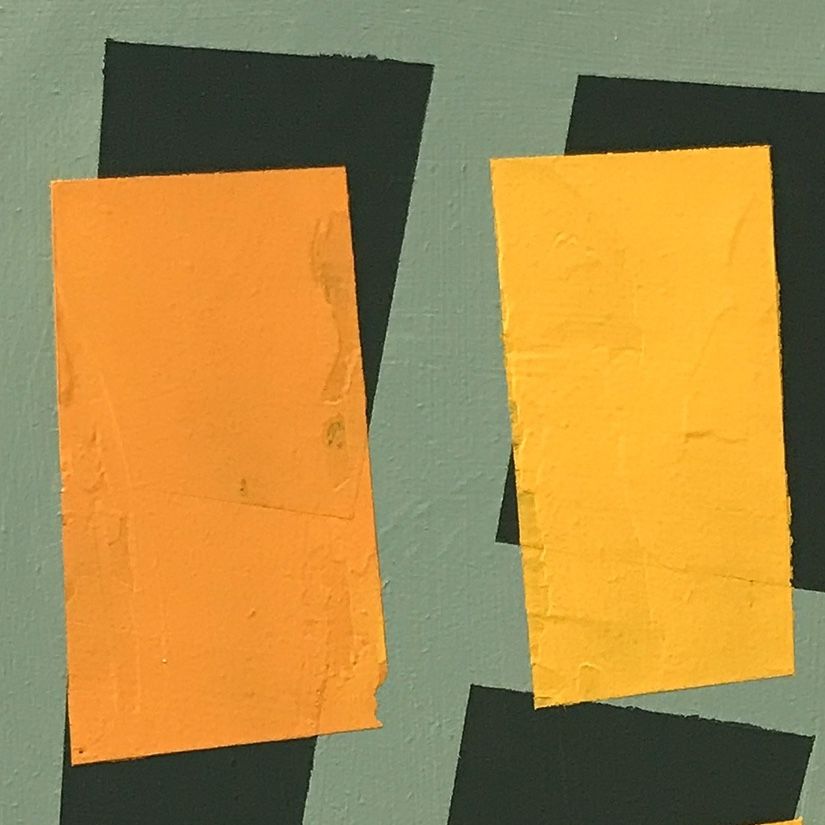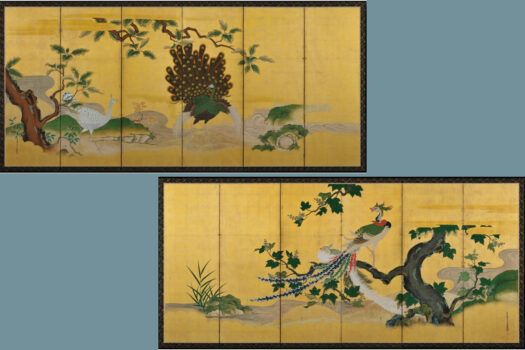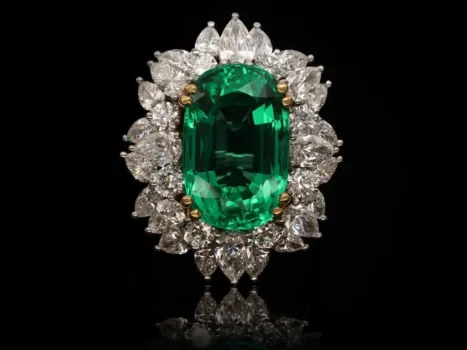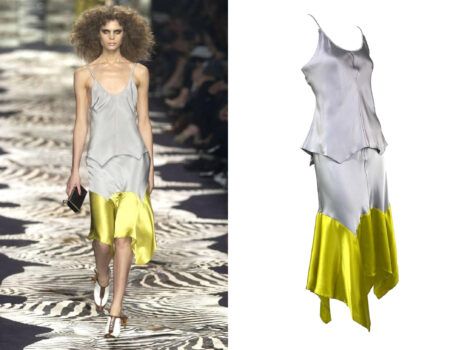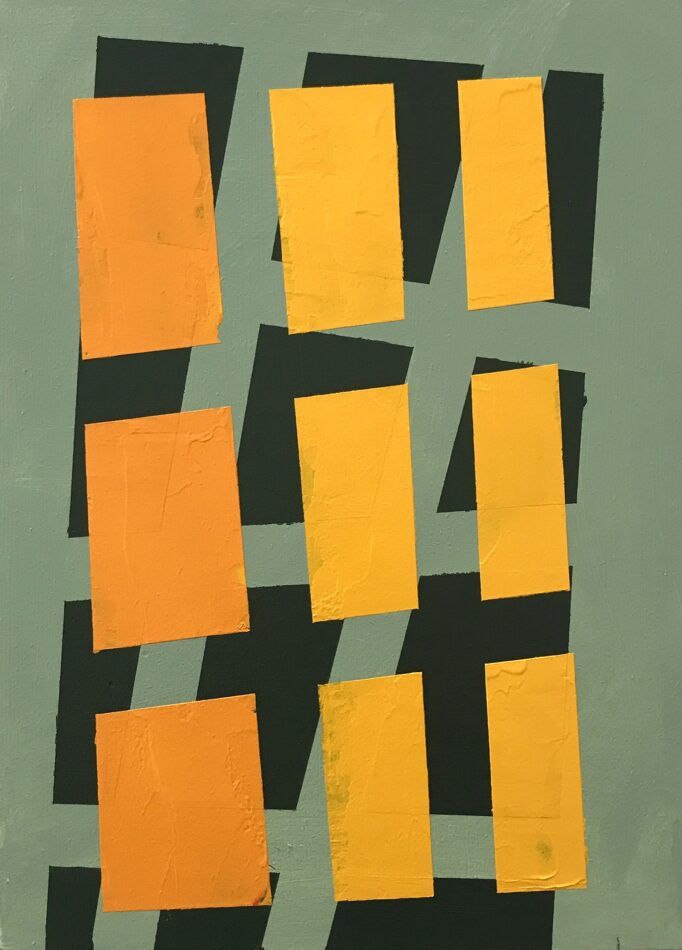
Lucio Pozzi’s The Hoe, 2020, lures viewers in with a visual tension. Rendered in acrylic paint on wood, the work layers crisp grids and shifting color fields.
Nine tilted rectangles appear to skid across the light-green surface, suggesting, with their amber hue, apartment windows at night — except the irregular black shadows behind them hint at a different dimensionality, which simultaneously confuses and delights the eye. Rather than impose a message, Pozzi sets the stage for something unplanned to unfold.
This spirit of discovery has animated Pozzi’s six-decade career. Born in Milan on November 29, 1935, he studied architecture and ran a graphic-design workshop in Rome before moving to the United States in 1962.
After attending Harvard’s International Summer Seminar, he settled in New York City, part of a wave of avant-gardists who blurred the lines between painting, sculpture, photography and video.
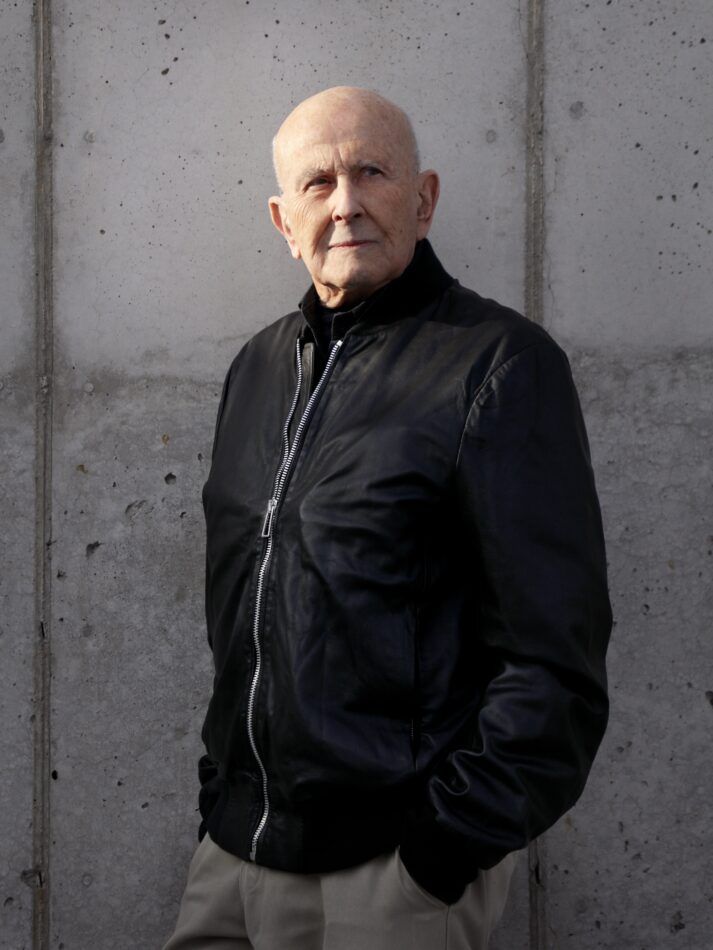
Now 89, he divides his time between Upstate New York and Verona, Italy, continuing to create with a rebellious restlessness.
“Lucio Pozzi is an extraordinary artist whose practice defies categorization,” says Hal Bromm, whose eponymous Manhattan gallery has represented Pozzi’s work, including The Hoe, for nearly five decades. “He is unafraid, visionary, never satisfied — an artist who refuses to be boxed in or labeled.”
The gallerist first met Pozzi socially in Tribeca in the early 1970s. At the time, Bromm was living at 10 Beach Street, the same address where he would launch his gallery in 1975. When Hal Bromm Gallery moved to Franklin Street, in 1976, Pozzi was among five artists invited to inaugurate the intentionally raw, unpainted space with site-specific installations.
Pozzi’s contribution — a triangular sheetrock cutout placed on the wall next to the negative space it once occupied — communicates the same sense of dislocation and playful rigor conveyed by The Hoe. The artist later compared his intervention in the unfinished gallery space to “adding a dissonant solo in a Thelonious Monk piece.”
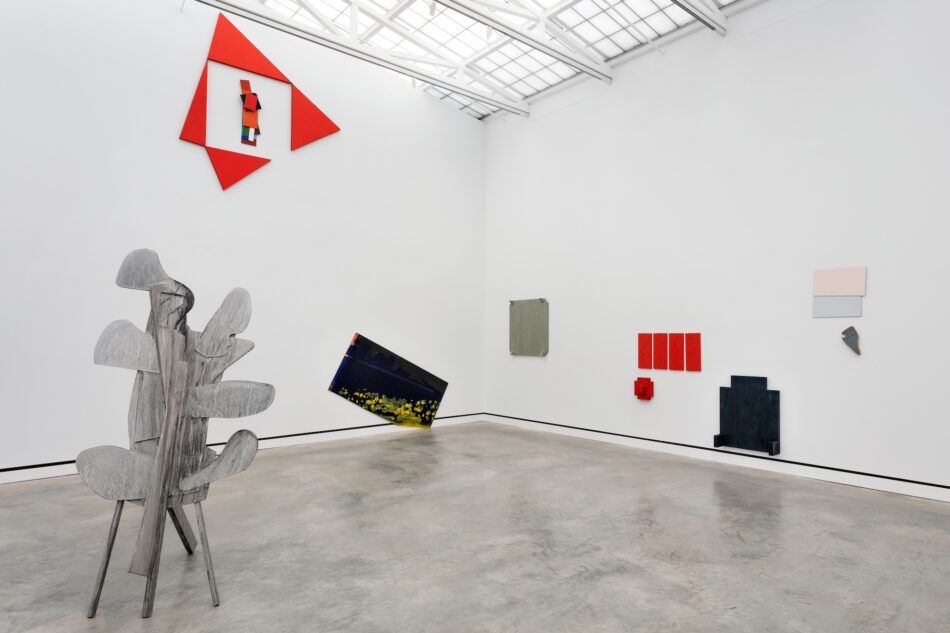
Among the exhibitions Hal Bromm Gallery is mounting to celebrate its 50th anniversary is “Lucio Pozzi Cornucopia: The Bielefeld Watercolors” (on view through May 10), a suite of small works on paper that Pozzi first displayed in his 1982 retrospective at Kunsthalle Bielefeld, in Germany.
Simultaneously, Magazzino Italian Art, a museum and research center in Cold Spring, New York, is honoring Pozzi’s milestone 90th birthday with “Lucio Pozzi: qui dentro/in here” (up through June 23), a cohesive and colorful survey of 60 years of innovation, with art placed on the floor, near the ceiling and at every latitude in between.
That show, curated by David Ebony, presents landmark pieces like the freestanding sculpture Elbow, 1963, and the radiant Open Gates of Spring (Persephone), 2023, spotlighting Pozzi’s dialogue with Arte Povera and American minimalism, as well as his enduring inventiveness.
Given the variety of materials and forms on view, it’s hard to pin down a trademark Pozzi style, and that’s the way he likes it. As Bromm notes, “Lucio elaborated on his lack of a ‘style’ in a 1979 letter published in Artforum: ‘I find myself not caring very much whether someone is or is not recognizing my work as mine.’ ”
In The Hoe, the gallerist adds, “Pozzi invites the viewer to consider the happenstance of the patterns, not as an intention but as an exploration to discover what happens when the eye follows opposing shapes.”
All of this embodies Pozzi’s lifelong embrace of what he calls “the art of not knowing.”
